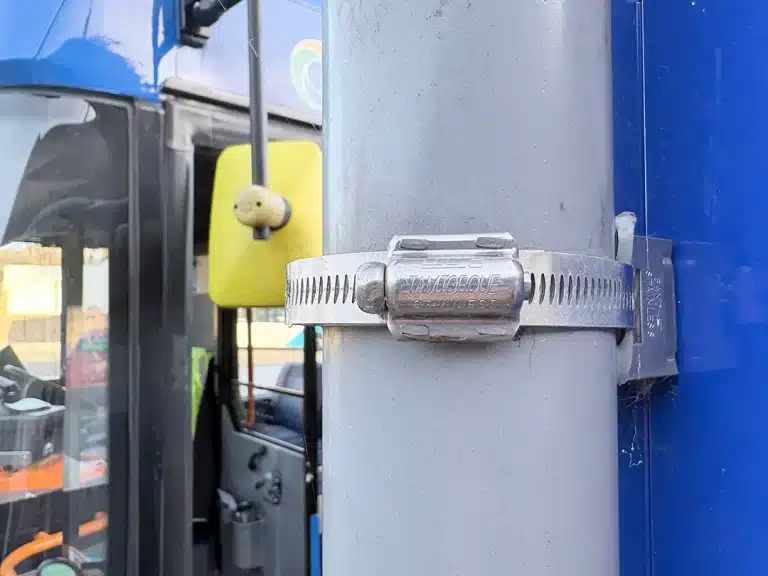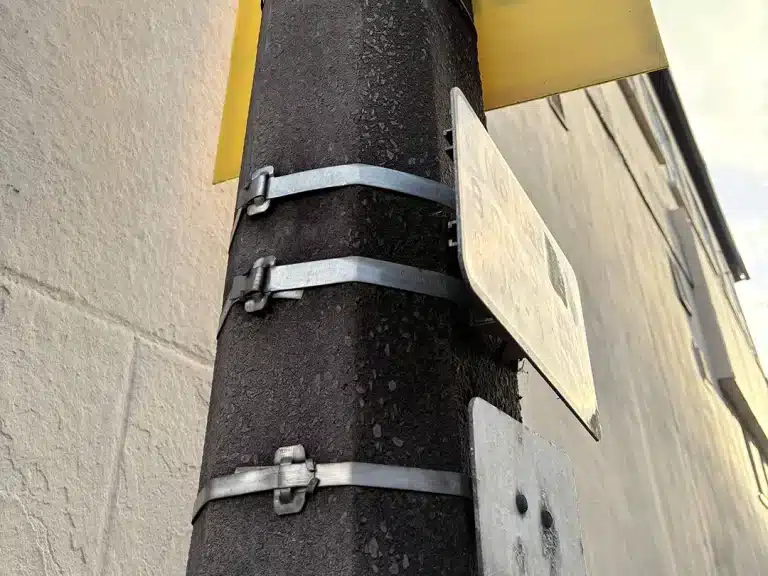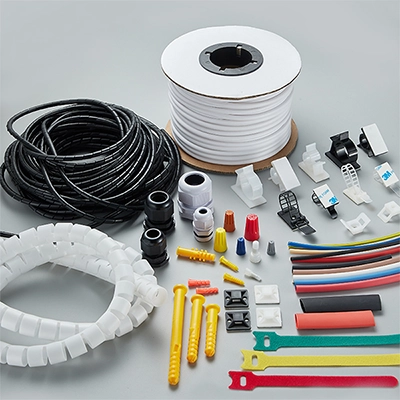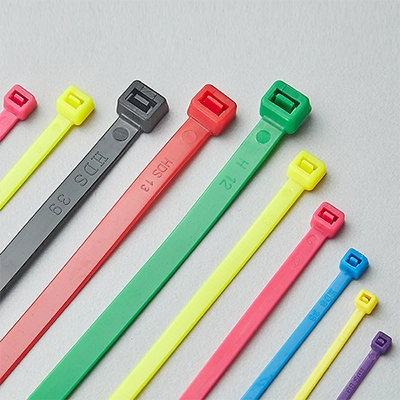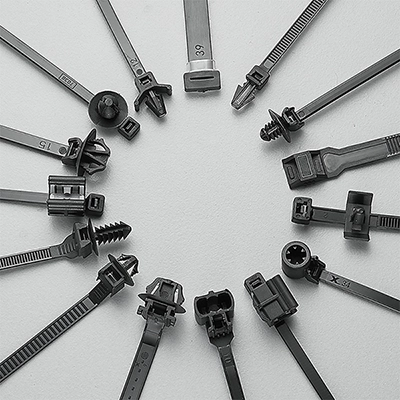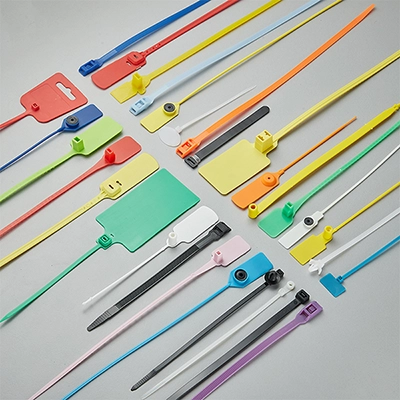Why nylon cable ties turn brittle in biting cold? Especially under cold conditions or cold winters. Is a common concern in industrial applications and everyday scenarios. While nylon cable ties usually exhibit excellent durability and functionality, in specific conditions such as low temperatures, they can become brittle and easily break. Such brittleness not only disrupts the regular operation of equipment but could also pose potential safety threats. So why do nylon cable ties become brittle at low temperatures? Let’s dive into why this happens.
Nylon Cable Ties

Nylon cable ties, also known as zip ties or plastic ties, are made from various types of polyamides (nylon) such as PA6, PA66, PA12, PA45, and PA11. Each type possesses unique chemical and physical properties, though PA6 and PA66 are the most commonly used.
Key Characteristics of Cable Ties
1. Strength and Durability
Cable ties, predominantly used for bundling and securing objects, are known for their impressive tensile strength. This strength can be largely credited to the structure of nylon’s molecular chains. At a molecular level, the movement of these chains determines the material’s toughness and brittleness.
2. Elasticity and Flexibility
Cable ties need to be flexible enough to wrap around bundles and rigid enough to lock securely in place. This balance comes from the elastic modulus or Young’s modulus of the nylon.
The Elastic Modulus of nylon cable ties can be described as the material’s resistance to deformation. When a material is subjected to an external force, it undergoes some form of deformation. Typically, the higher the Elastic Modulus, the stiffer the material; conversely, the lower the Elastic Modulus, the softer the material.
3. Crystalline Behavior of Nylon
Nylon derives its strength and flexibility from its molecular structure, comprising two main regions: the amorphous, with randomly arranged chains, and the semi-crystalline, with aligned chains. The amorphous regions grant flexibility due to their disordered layout, while the semi-crystalline areas provide strength. For cable ties, achieving a balance between these regions is vital to ensure both ductility and secure holding strength.
Factors Affecting the Brittleness of Cable Ties in Cold Temperatures
1. Molecular Chain Movement
Under warm conditions, the movement of molecular chains in nylon is faster, enabling the material to absorb and disperse stress effectively, which we associate with “toughness.” Conversely, in colder temperatures, these chains move slower, making them less adept at absorbing and dispersing stress. As a result, when subjected to stress, such materials are more prone to breaking as they can’t efficiently absorb these stresses through plastic deformation. This behavior is what we term “brittleness.”
2. Reduced Toughness
Cold temperatures restrict the movement of the nylon’s molecular chains. As a result, when faced with an impact or sudden force, the material can’t distribute the energy as effectively, leading to brittleness.
3. Changes in Elastic Modulus
When temperatures drop, the elastic modulus of the nylon increases. This makes materials like cable ties become more rigid, which, in turn, makes them more susceptible to snapping.
4. Impact on Nylon’s Crystalline Behavior
Low temperatures can hinder the crystallization of nylon. Incomplete crystallization might lead to smaller crystals or more amorphous regions, affecting its mechanical properties.
5. Increased Sensitivity to Stress Cracks
Cold environments can significantly affect nylon’s resistance to stress cracks. Reduced molecular chain movement in cold temperatures makes the material more brittle, leading to the propagation of cracks and eventual breakage.
Conclusion
The tendency of cable ties to become brittle in cold temperatures is a result of various factors inherent to nylon’s properties. While these zip ties are reliable, taking preventive measures during colder months—like using cold weather cable ties specifically for colder environments—can ensure longevity and safety.
Nike Plastic Cold Weather Cable Ties
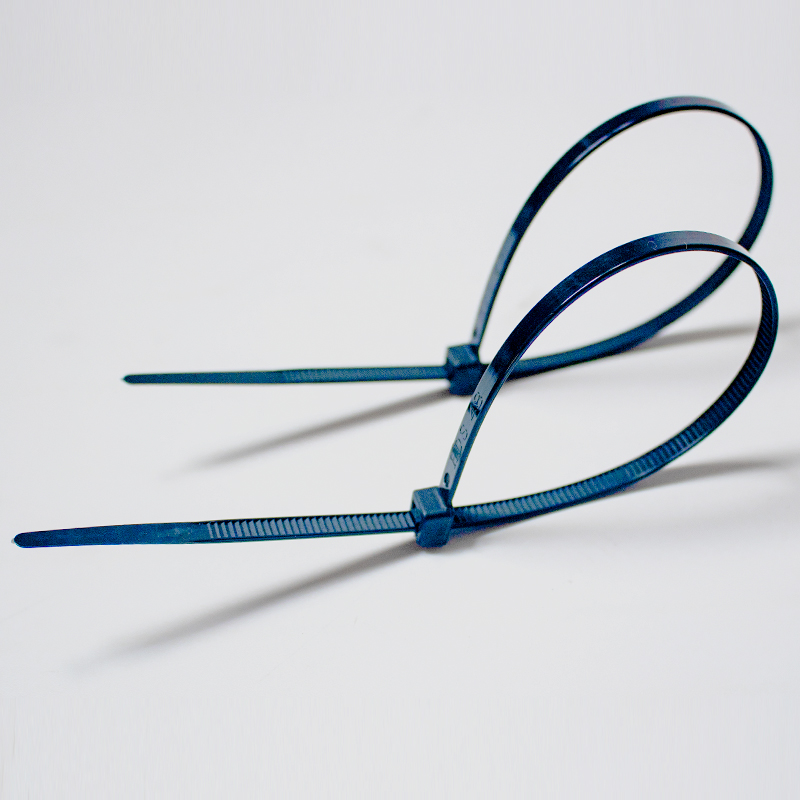
Our cold weather cable ties can withstand temperatures as low as -45°C. We pride ourselves on offering nylon cable ties suited for various environments, whether they’re cold or heat-intensive. Recognizing that every situation is distinct, we’re ready to provide solutions that match your application precisely. If you’re in need or have questions, don’t hesitate to reach out.



